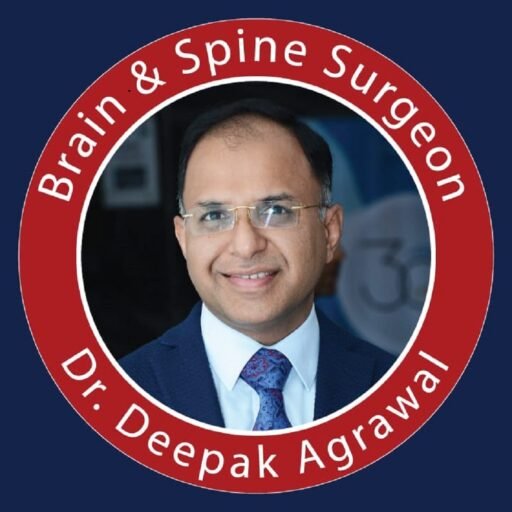Topics
Table of Contents
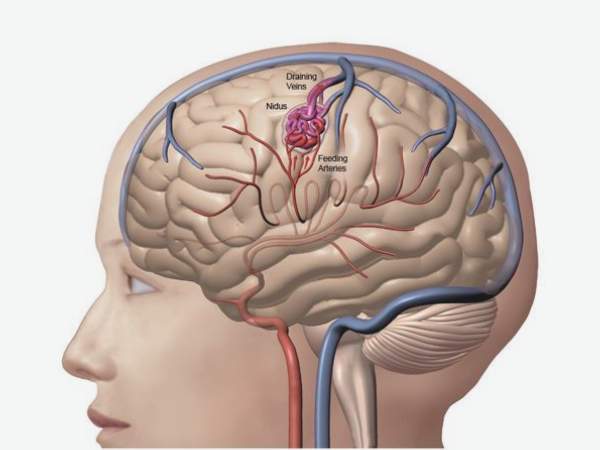
In neurosurgery, arteriovenous malformations (AVMs) in deep brain regions such as the thalamus and basal ganglia provide a special difficulty. These areas are essential for consciousness, motor control, sensory processing, and a number of autonomic processes. There is a significant chance of neurological impairments following traditional surgical procedures in these locations. But because to developments in neurotechnology, Gamma Knife radiosurgery (GKRS) is now a very accurate and less invasive therapeutic option for these kinds of complicated lesions.
Recognising AVMs in the Thalamus and Basal Ganglia
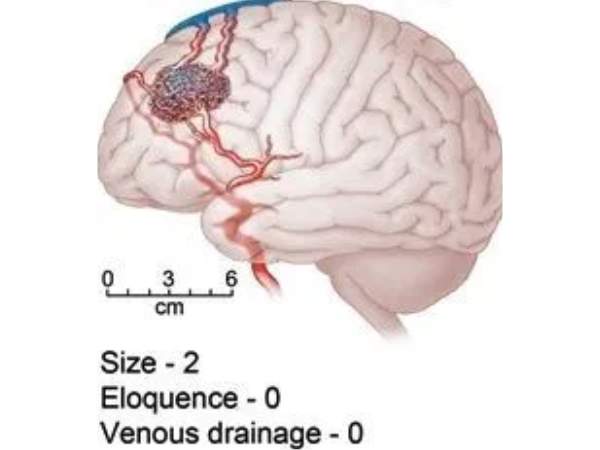
An abnormal, twisted network of blood vessels in which arteries join veins directly without going via capillaries is known as an arteriovenous malformation. Hemorrhagic stroke may result from the rupture of the vessels caused by the high-pressure blood flow created by this.
AVMs in the Basal Ganglia
The basal ganglia reside deep within the brain and play a role in cognitive and movement control. Because of the nearby important tissues, AVMs in this region are challenging to surgically approach and are frequently discovered following an unexpected haemorrhage.
AVMs that are thalamic
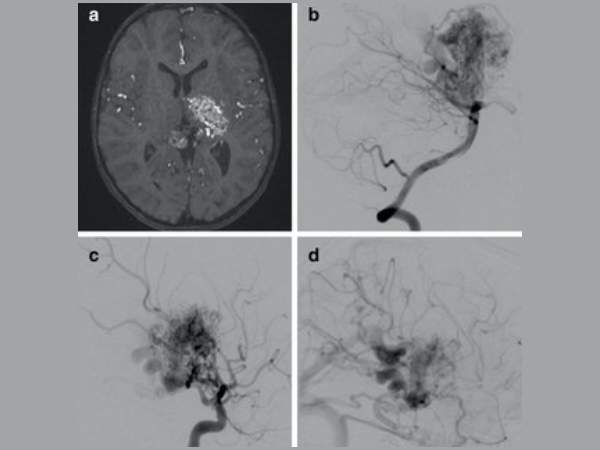
Sensory and motor signals are transmitted via the thalamus. Here, AVMs are frequently deeply ingrained, and intervention poses a significant risk of compromising voluntary movement, awareness, and sensory perception.
Gamma Knife Radiosurgery: What is it?

Gamma Knife Radiosurgery is a stereotactic, non-invasive radiosurgical technique that treats disorders deep inside the brain without making an actual incision by using concentrated gamma radiation beams.
- In spite of its name, it is a radiosurgical instrument rather than a knife.
- It provides more than 200 intensely concentrated gamma-ray beams that focus at one spot (the AVM nidus), giving the lesion a potent radiation dose while preserving the surrounding healthy brain tissue.
Gamma Knife for Deep-Seated AVMs: Why Use It?
In the thalamic and basal ganglia, traditional microsurgery or endovascular embolisation is frequently risky or less successful because
- This AVMs’ depth and inaccessibility.
- Proximity to eloquent regions, raising the possibility of serious brain injury.
- Complete nidus removal without resulting in irreversible impairments is difficult.
Gamma Knife Radiosurgery Benefits:
- Minimally invasive: No general anaesthesia or incision is necessary.
- High precision: AVM nidus targeting with sub-millimetric accuracy.
- Short recovery period and shorter hospital stay are two benefits of an outpatient treatment.
- Essential for deep, expressive brain regions, it preserves the surrounding brain tissue.
- Cumulative effect: Over the course of one to three years, the AVM gradually obliterates.
The Step-by-Step Process
- Imaging Prior to Surgery
- The AVM nidus, together with its feeding arteries and draining veins, are precisely mapped using high-resolution MRI, CT Angiography (CTA), and Digital Subtraction Angiography (DSA).
- Placement of Stereotactic Frames
- To guarantee accurate targeting, a lightweight head frame is placed while under local anaesthesia.
- Planning for Treatment
- Radiation oncologists and neurosurgeons plan the precise coordinates and dose needed for the AVM using specialised software.
- Delivery of Radiation
- As the Gamma Knife equipment sends concentrated radiation beams to the AVM, the patient lays comfortably. Depending on the size and complexity of the lesion, the process can take anywhere from 30 minutes to several hours.
After Surgery Care
- After a few hours of observation, the patient is usually released that same day. A follow-up imaging procedure is planned to evaluate the development of obliteration.
Anticipated Results
- Obliteration Rates: Research on deep-seated AVMs treated with GKRS over a three-year period reveals obliteration rates ranging from 70 to 90%.
- Haemorrhage Risk Reduction: The chance of rebleeding dramatically decreases as soon as the AVM begins to diminish.
- Minimal Morbidity: There is a significantly lesser chance of neurological deterioration than with open surgery.
Hazards and Things to Think About
Even though Gamma Knife is thought to be safe, several negative consequences may still happen:
- Edema brought on by radiation: This transient swelling might result in headaches or other neurological problems.
- Although rare, radiation necrosis can cause irreversible impairments if left untreated.
- Delayed AVM rupture: Haemorrhage is still possible until complete obliteration is accomplished.
- Follow-up is necessary: Imaging must be done on a regular basis to track development.
Who is a candidate for this?
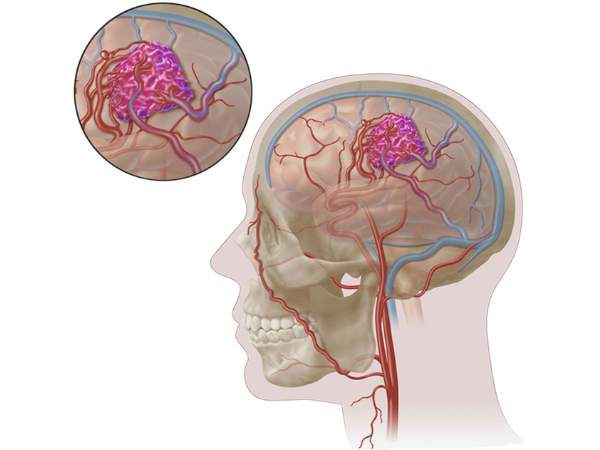
Individuals with:
- Little to medium-sized AVMs in the thalamus or basal ganglia.
- Bleeding history from a deep AVM.
- AVMs are not appropriate for embolisation or surgical resection.
- Patients who are high-risk candidates for surgery or who choose non-invasive treatment.
In conclusion
The treatment of thalamic AVMs and basal ganglia has been completely transformed by Gamma Knife Radiosurgery, which provides a non-invasive, safe, and efficient substitute for traditional neurosurgery. It gives patients with profound brain vascular abnormalities that would otherwise be incurable fresh hope because of its precise targeting and low risk of consequences.
To find out if Gamma Knife Radiosurgery is the best course of action for you or a loved one who has been diagnosed with a deep-seated AVM, speak with an experienced neurosurgeon with radiosurgery experience.
Sources:
- https://pubmed.ncbi.nlm.nih.gov/22264181/
- https://thejns.org/view/journals/j-neurosurg/116/4/article-p899.xml
- https://pubmed.ncbi.nlm.nih.gov/19415175/
- https://www.sciencedirect.com/science/article/abs/pii/S0967586815006128
- https://link.springer.com/article/10.1007/s00701-009-0335-0
- https://www.jocn-journal.com/article/S0967-5868(15)00612-8/abstract
You May Also Know Related to Gamma Knife
FAQ’s
How does Gamma Knife work?
Gamma Knife uses 192–201 precisely focused beams of gamma rays that converge at a single target point in the brain. This high dose of radiation damages the DNA of abnormal cells, stopping their growth or causing them to shrink, while minimizing exposure to nearby healthy tissue.
Is Gamma Knife a surgery?
No, Gamma Knife is not a traditional surgery. It is a non-invasive outpatient procedure performed without any incision, stitches, or general anesthesia in most cases.
What conditions can be treated with Gamma Knife?
Gamma Knife is commonly used for:
Brain tumors (benign and malignant)
Metastatic brain lesions
Arteriovenous malformations (AVMs)
Trigeminal neuralgia
Acoustic neuromas (vestibular schwannomas)
Pituitary tumors
Certain functional disorders (like tremors)
Is Gamma Knife painful?
The procedure is generally painless. Patients may feel mild pressure while the head frame (if used) is applied or may experience slight discomfort from anesthesia injections, but the treatment itself is not painful.
How long does the procedure take?
Depending on the condition and treatment plan, Gamma Knife may take 30 minutes to 3 hours. Most patients go home the same day.
What are the possible side effects?
Common side effects are usually mild and temporary, including:
Headache
Nausea
Fatigue
Mild scalp swelling or tenderness at the frame site
Rarely, some patients may experience delayed radiation effects such as brain swelling or radiation necrosis.
When can the patient return to normal activities after Gamma Knife?
Most patients can return to their normal routine within 24–48 hours after the procedure.
You may feel mild fatigue for a few days.
Follow-up imaging is usually required after 1 year.
How effective is Gamma Knife?
Gamma Knife has a high success rate and has been used worldwide for decades. Its effectiveness depends on the condition treated, size and location of the lesion, and overall patient health. In many cases, it offers results comparable to open surgery with fewer risks.
Can Gamma Knife be repeated if needed?
Yes, in some cases Gamma Knife treatment can be repeated if the disease recurs or if new lesions develop.
Is Gamma Knife safe?
Yes. Gamma Knife is considered one of the safest and most precise forms of radiosurgery, with millions of patients treated globally and extensive clinical data supporting its use.
Who is eligible for Gamma Knife treatment?
Eligibility depends on factors such as:
Size and location of the lesion
Overall health and age
Whether open surgery is too risky
A neurosurgeon and radiation oncologist will decide if Gamma Knife is the best option for you.
What happens before the procedure?
A detailed MRI or CT scan is performed to map the brain.
A lightweight head frame or mask is used for accuracy.
Your doctors plan the radiation dose and target areas using specialized software.
Will I need anesthesia?
Local anesthesia is given if a head frame is used.
General anesthesia is usually not required, except for children or patients unable to remain still.
What is the cost of Gamma Knife in India?
Costs vary depending on hospital, city, and condition treated. On average, Gamma Knife in India ranges from ₹1.5 lakh to ₹4.5 lakh. It is usually more affordable compared to treatment in Western countries. At AIIMS Delhi, it is much more affordable around ₹75,000 which makes it affordable for the patients in need.
Where can I get Gamma Knife treatment in Delhi?
AIIMS Delhi is one of the leading centres for Gamma Knife in India.
AIIMS uses the latest Gamma Knife Perfexion system.
It has successfully treated thousands of patients for brain tumors, blood vessel problems, and even eye cancers.
The treatment is done by expert neurosurgeons such as Dr. Deepak Agrawal and team.
Clinic timings for Gamma Knife OPD at AIIMS Delhi: Monday & Friday, 8:00 AM – 9:00 AM.
Cost is around ₹75,000 and is subsidized compared to private hospitals.
What is the complete process of the Gamma Knife?
The whole procedure is usually done in one day:
- Consultation & Planning – Doctors review your scans and decide the treatment.
- Head Frame/Mask – A lightweight frame or mask is placed to keep your head still.
- Imaging – MRI/CT scans are done to locate the exact target.
- Treatment Planning – Specialists plan the dose and direction of radiation.
- Gamma Knife Treatment – You lie on the machine; painless radiation beams treat the target (30 mins–3 hrs).
- Recovery & Discharge – The frame is removed, and most patients go home the same day.
- Follow-up – MRI after a few months to check results.
What formalities do I have to complete prior to getting the date of GK?
Before you get a treatment date, you need to complete a few steps:
- OPD Registration – Visit the Neurosurgery OPD (Gamma Knife clinic at AIIMS, Mon & Fri 8–9 AM) and register.
- Consultation with Doctor – Meet the neurosurgeon who will check your reports, MRI/CT scans, and medical history.
- Investigations – Sometimes fresh MRI/CT or blood tests are needed for treatment planning.
- Medical Fitness – Basic checks like blood pressure, sugar, heart condition, etc.
Financial/Insurance Approval –
- If using Ayushman Bharat or government schemes, you need approval papers.
- If self-paying, you will be given the estimated cost (~₹75,000 at AIIMS).
- Consent & Admission Slip – Once doctors confirm you are fit and formalities are done, you sign the consent form.
- Treatment Date Allotment – A date is given for your Gamma Knife procedure.
What formalities do I have to complete after getting the date of GK?
Once you receive your Gamma Knife date, you’ll need to do a few simple things before the procedure:
- Admission Process – Report to AIIMS on the morning of your procedure and complete admission at the Neurosurgery ward/Daycare.
- Paperwork – Carry your OPD slip, MRI/CT films, blood test reports, admission slip, and ID proof. If you are covered under Ayushman Bharat/insurance, keep those approval papers ready.
- Consent Forms – You (or a family member) will sign consent for the procedure and anesthesia.
- Medical Check-up – Doctors will check your BP, sugar, heart rate, and do a quick physical exam.
- Fasting – Usually, you will be asked to not eat or drink for 6 hours before the procedure.
- Pre-Procedure Prep – An IV line may be put, and medicines (sedation/antibiotics if needed) are given.
- Treatment – You are then taken to the Gamma Knife room for frame/mask placement, imaging, and treatment.
After the procedure, you’ll be observed for a few hours and most patients are discharged the same day or next morning.
What investigations to be done?
Urea & creatinine
Should I come fasting?
No, You can have light breakfast.
In case of HT/DM should take my medicines?
Yes, you can take the medicine and then come for the treatment.
